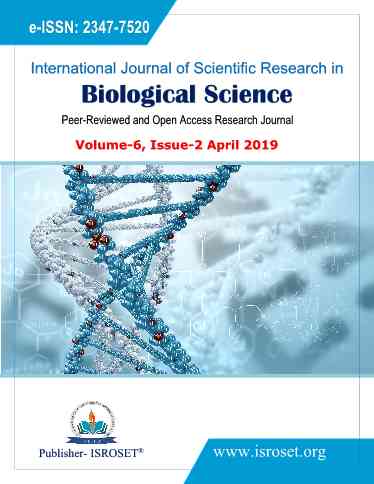Quantification of the minimum amount of lemon juice and apple cider vinegar required for the growth inhibition of dandruff causing fungi Malassezia furfur
Keywords:
Malasezzia furfur, lemon juice, apple cider vinegarAbstract
The main focus of this study is to quantify the amount of lemon juice and apple cider vinegar required to inhibit the growth of lipophilic fungus, Malassezia furfur. Malassezia furfur infects the human scalp, affects hair and causes the dandruff. In this work, the antifungal effect of lemon and apple cider vinegar was investigated along with commercially available antifungal drug fluconazole. Agar diffusion method was used and the zone of inhibition was measured to quantify the amount required and also to estimate the antifungal efficacy of lemon juice and apple cider vinegar. We have used different concentration of lemon juice and apple cider vinegar such as 10%, 20%, 30%, 40%, and 50% concentrations. From our results, by observing the zones of inhibitions on the petridishes, we confirm that lemon juice and apple cider vinegar has good antifungal effect on Malassezia furfur and around 3ml to 4ml of lemon juice or apple cider vinegar diluted and made to 10ml of the solution with water would be sufficient enough to inhibit the growth of Malassezia furfur. This study justifies the use of either lemon juice or apple cider vinegar as a remedy for Malassezia furfur infected scalp and hair.
References
J.B Luis J, C. T.C Wikramanayake, "Seborrheic dermatitis and dandruff: a comprehensive review." Journal of clinical and investigative Dermatology, 3(2), 2015.
S.Ranganathan, T. Mukhopadhyay, "Dandruff: the most commercially exploited skin disease." Indian journal of Dermatology, 55(2),130, 2010.
A.K. Gupta, R. Batra, R.Bluhm, T. Boekhout , T.L. Dawson Jr, "Skin diseases associated with Malassezia species." Journal of the American Academy of Dermatology, 51(5), 785-798, 2004.
R. Vijayakumar, C. Muthkumar, T. Kumar, R. Sarvanamuthu, “Characterization of Malassezia furfur and its controlby using plant extracts”, Indian journal of Dermatology, 51(2), 145-148, 2006.
S. Shuster, “The aetiology of dandruff and the mode of action of therapeutic agents”. British journal of Dermatology, 111, 235-242, 1984.
J.. Faergemann, J.C. Jones, O. Hettler, Y. Loria, “Pityrosporum ovale (Malassezia furfur) as the causative agent of seborrhoeic dermatitis: New treatment options.” British Journal of Dermatology, 134 :Suppl. 46, 12-15, 1996
M. Pingili, S. Vanga , R.K. Raparla, “Antifungal activity of plant extracts against dandruff causing organism Malassezia furfur.” International Journal of Bioassays, 5(11), 5047-9, 2016.
Downloads
Published
How to Cite
Issue
Section
License

This work is licensed under a Creative Commons Attribution 4.0 International License.
Authors contributing to this journal agree to publish their articles under the Creative Commons Attribution 4.0 International License, allowing third parties to share their work (copy, distribute, transmit) and to adapt it, under the condition that the authors are given credit and that in the event of reuse or distribution, the terms of this license are made clear.







